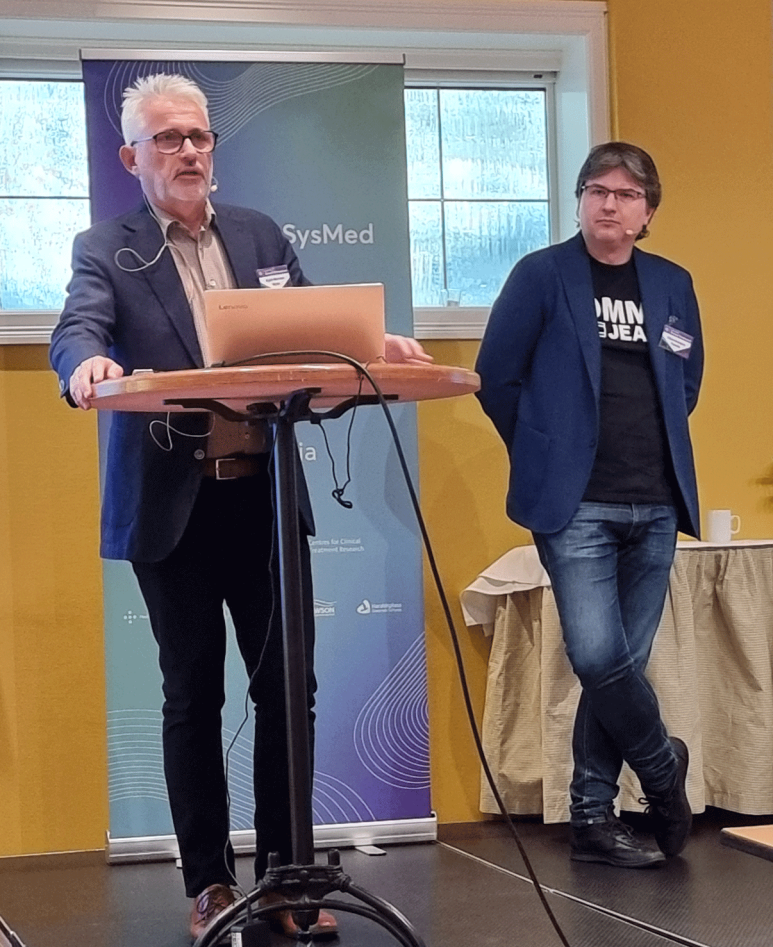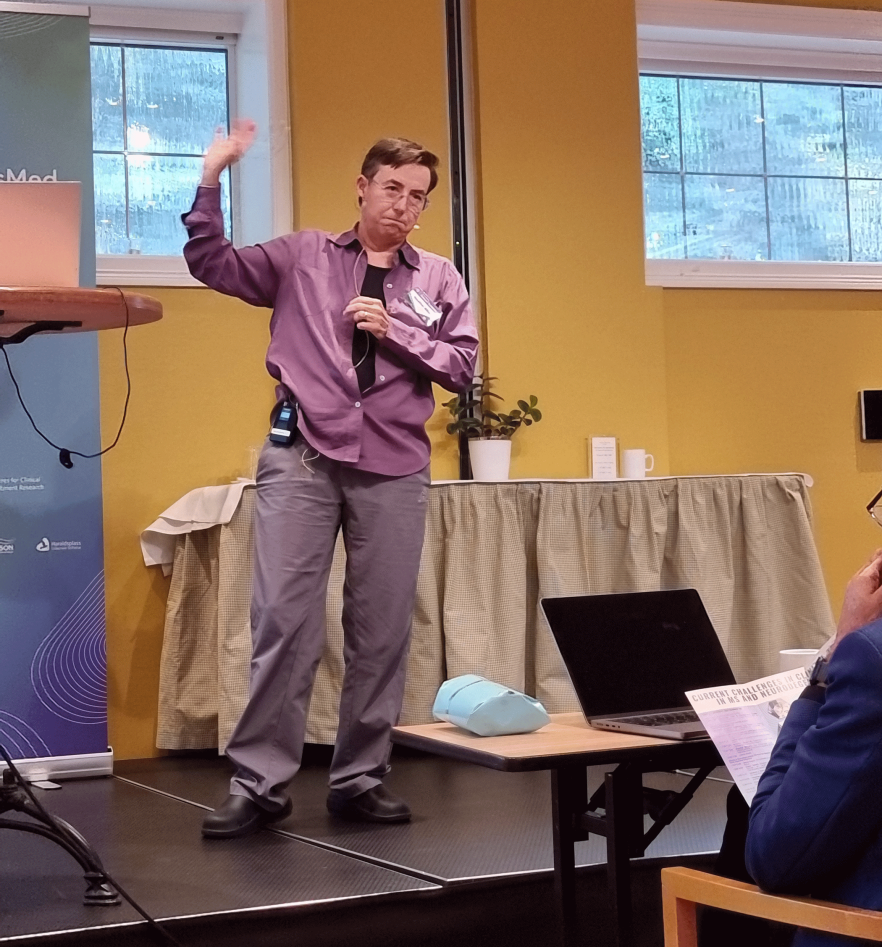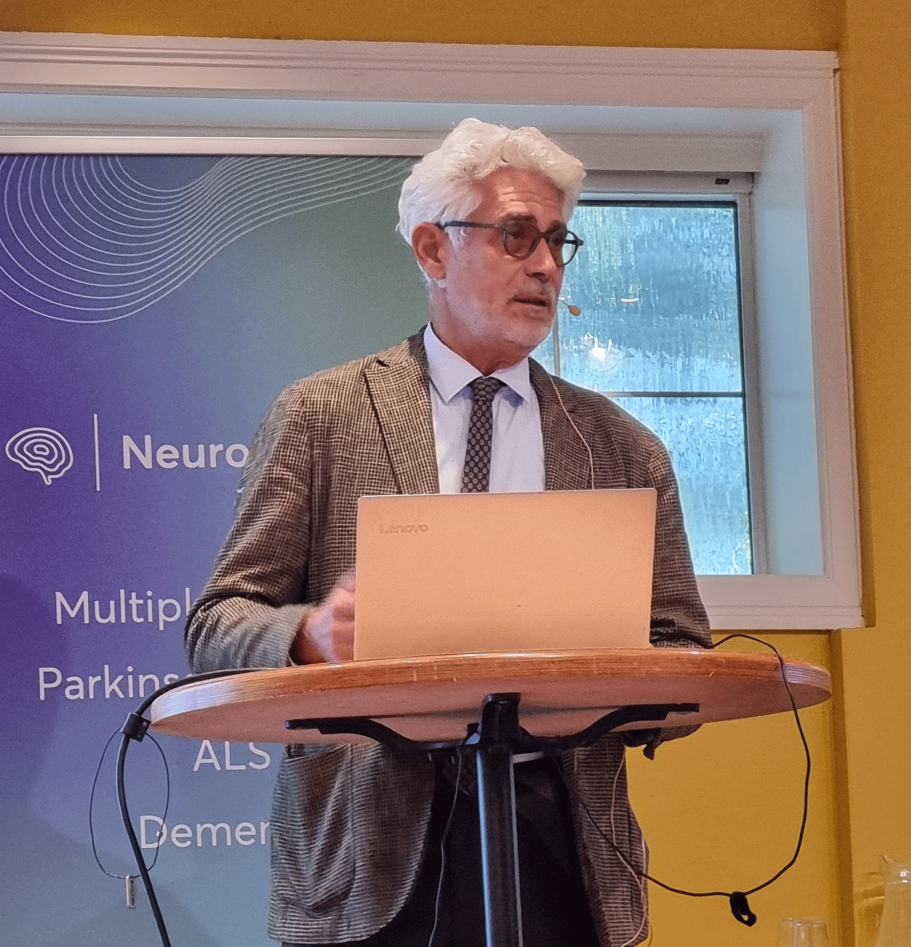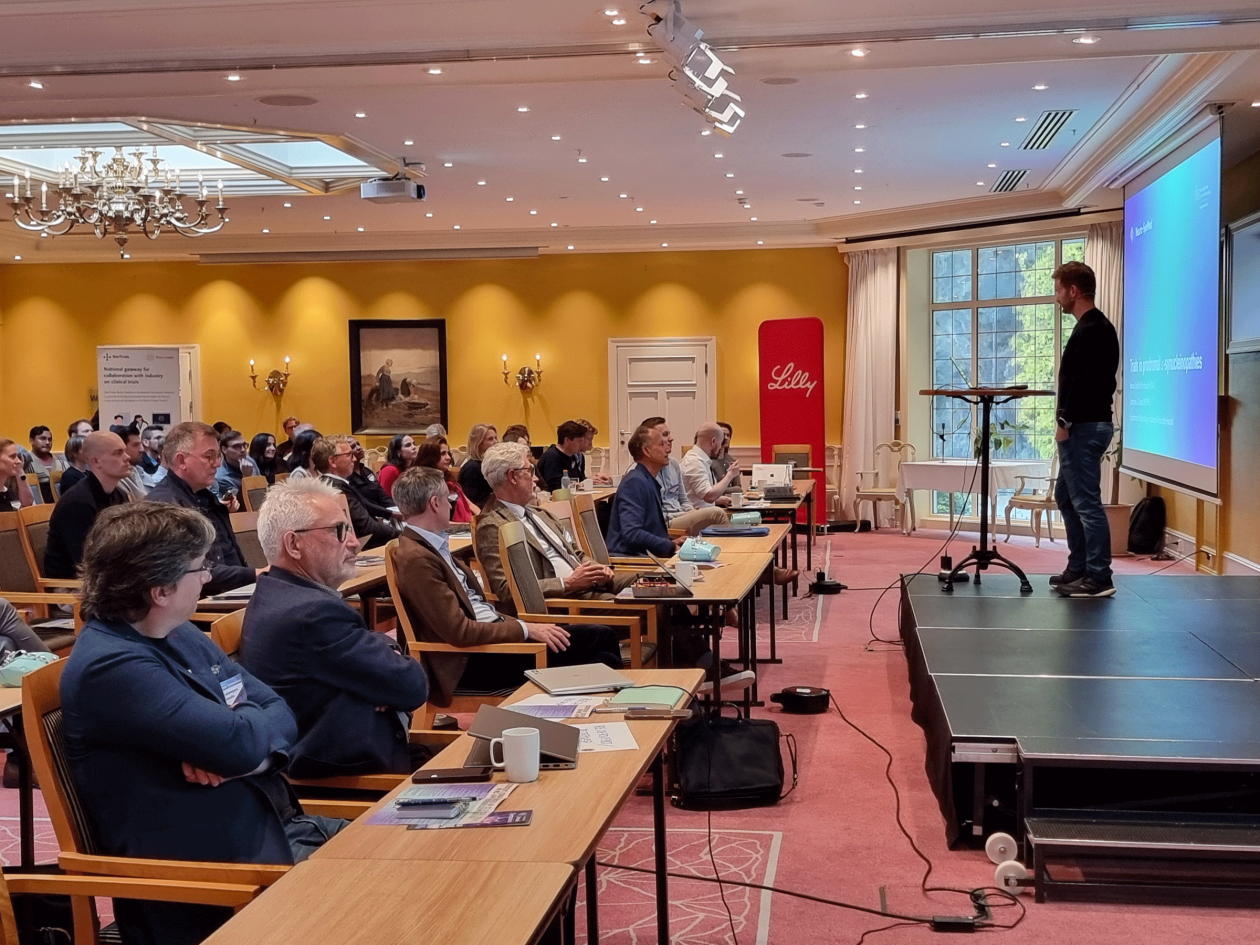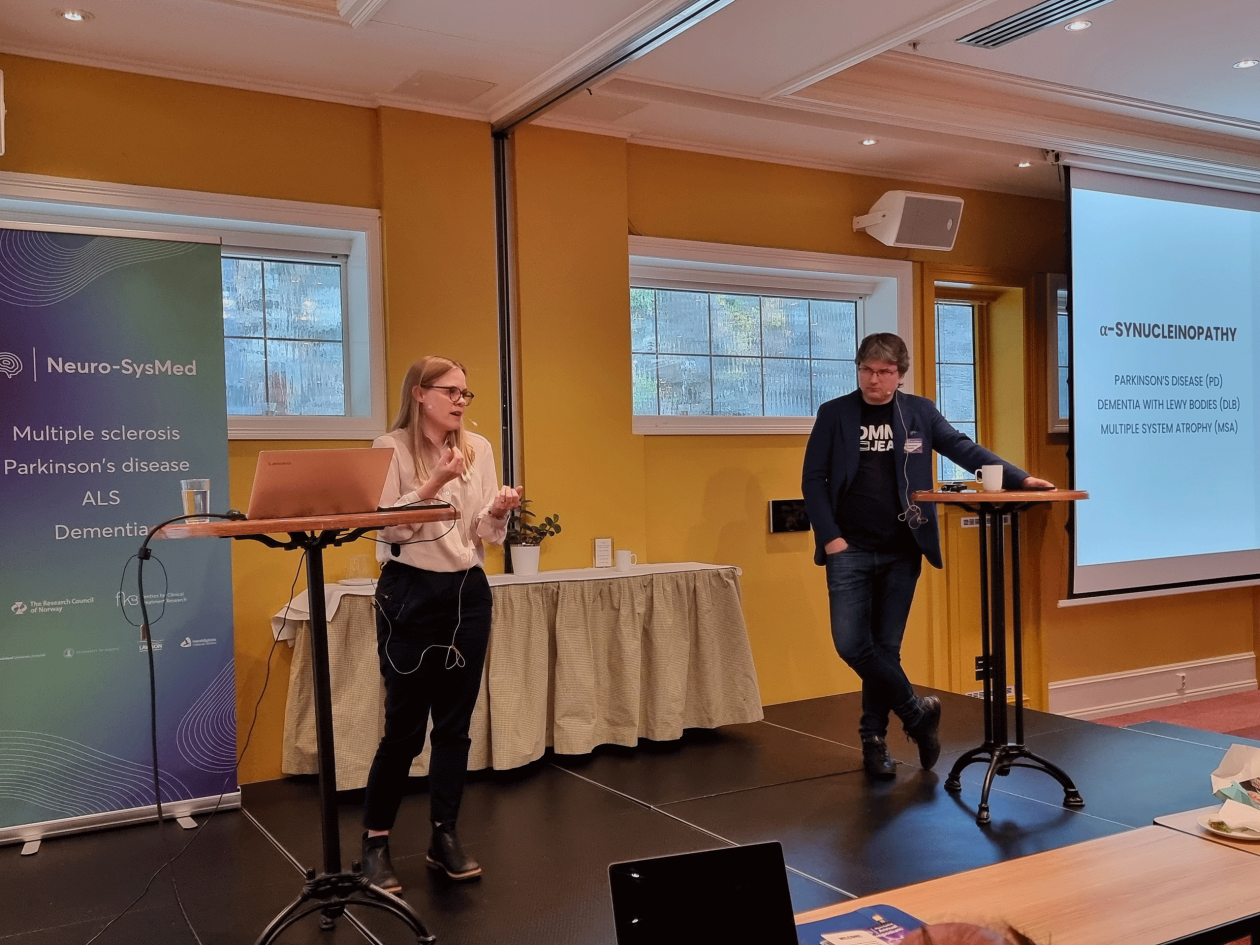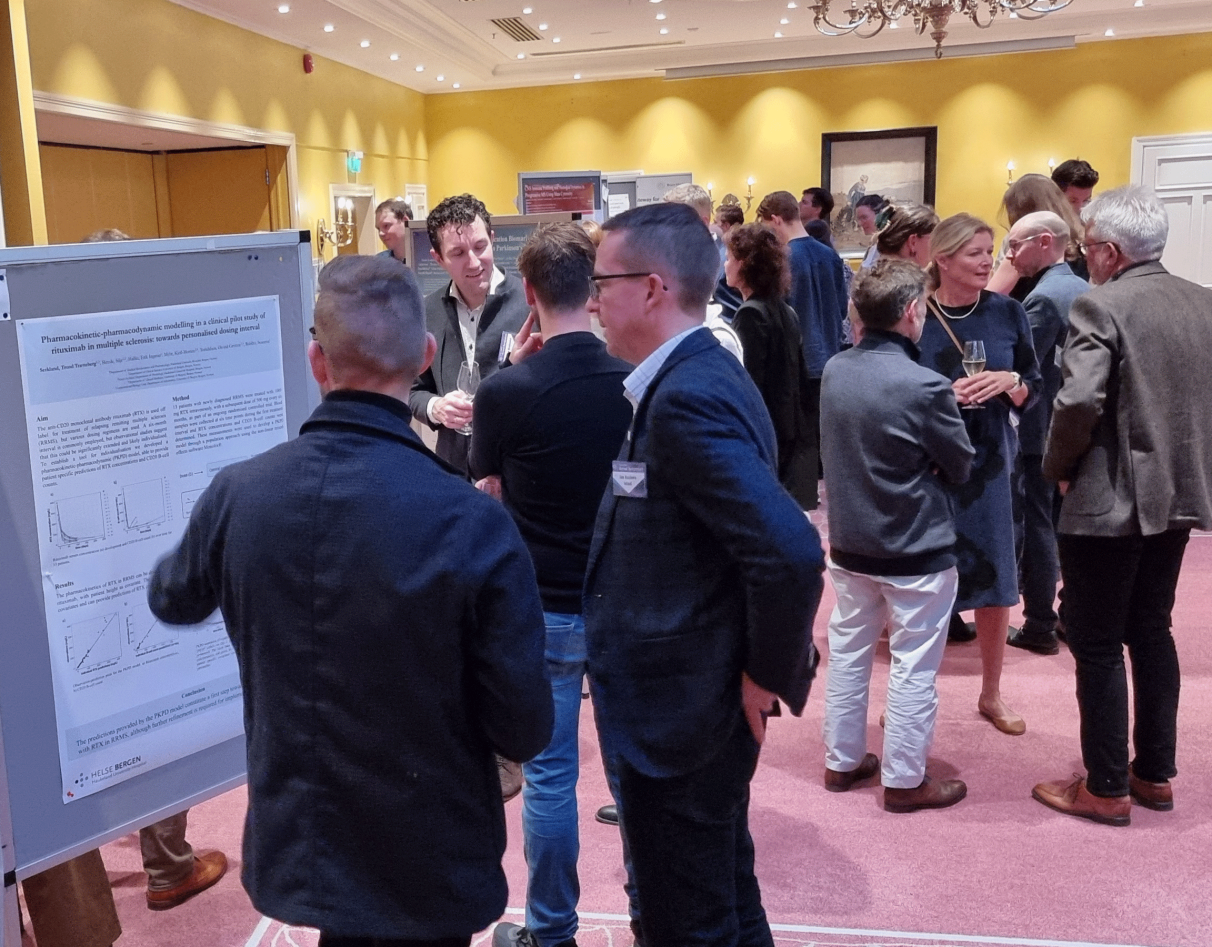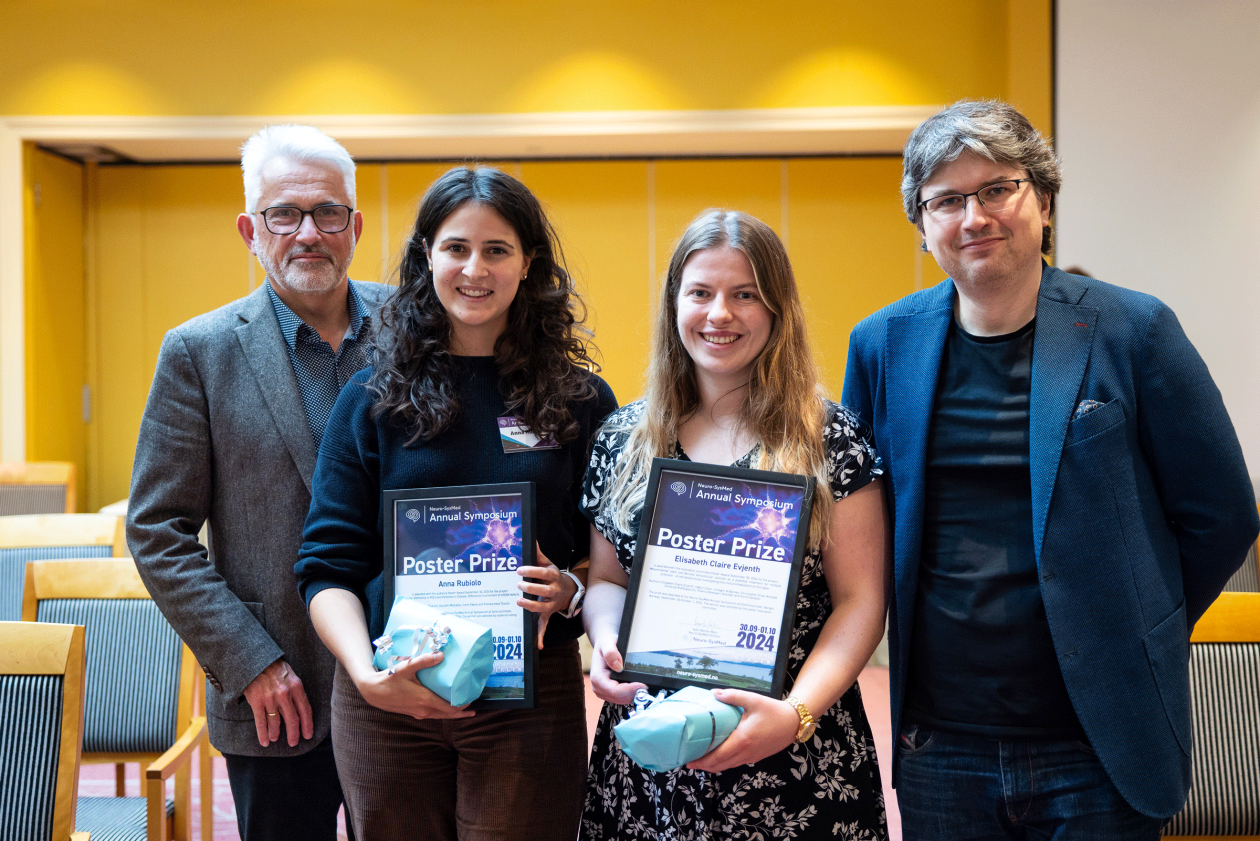The 2024 Neuro-SysMed Annual Symposium
Neuro-SysMed hosted its 2nd Annual Symposium during September 30 and October 1, 2024, also this time at the historic Solstrand Hotel outside of Bergen. Altogether 125 participants from the Neuro-SysMed research fields, in a very international mix, enjoyed scientific talks, discussions, posters and mingling, and not least Solstrand’s beautiful surroundings and delicious cuisine.

Main content
Besides being the Neuro-SysMed event of the year, the annual symposium is part of the course NEUROSYSM920 - Neuro-SysMed seminars and symposium, at the Neuro-SysMed Research School for Translational Neuroscience.
The Neuro-SysMed Directors Kjell-Morten Myhr and Charalampos Tzoulis opened the program of the symposium with a talk on current challenges in clinical trials in MS and neurodegeneration, touching upon today’s status on therapies, particular challenges and areas of research, including Neuro-SysMed’s current projects and a discussion on design of future clinical trials.
Dementia and sustainability in care
In a session on dementia and sustainability in care, Raymond Koopmans (Radboud University Medical Centre, the Netherlands) gave a gripping talk on severe or extreme behavior in dementia, clearly constituting a major challenge for the multidisciplinary teams that try to care for these patients. This was followed by an interesting joint talk by Ipsit Vahia (McLean Hospital, Harvard University, USA) and Catharyn Gildesgame (Mass General Brigham Behavioral and Mental Health, USA) on developing academia–industry partnerships for a new wave of aging care where we incorporate technology into the clinic as well as in senior centers and in research. They provided advice on how to proceed as an academic medical center to foster successful strategic relationships with the tech industry, with investors, non-profit and for-profit care providers and service delivery organizations. Heather Allore (Yale School of Medicine, USA) explained pragmatic clinical trials and how they differ from traditional explanatory clinical trials. She highlighted pragmatic trials as ideally suited to testing the effectiveness of complex interventions in vulnerable populations at the point of care, although they are complex to conduct and interpret.
The session was completed with talks from two of Neuro-SysMed’s own researchers, Kristoffer Haugarvoll sharing his experience from user involvement in dementia research, and Ragnhild Eide Skogseth with an overview of STRAT-COG, a prospective cohort study to stratify dementia. She demonstrated how the current diagnostic paradigm where individuals are diagnosed with one disease can be an obstacle to effective treatment as well as to clinical trial design in neurodegenerative cognitive decline.
The hunt for disease modification
The session in neurodegeneration explored various current research projects that aim for disease modification. Olivier Rascol (Toulouse University Hospital, France) showed results from their LIXIPARK trial that assessed the effect of lixisenatide on the progression of motor disability in persons with Parkinson’s disease. He included lessons learnt from the trial itself, with interesting reflections on how we can be more efficient in running clinical trials for neuroprotective interventions, notably through platform trials. Ambra Stefani (Medical University of Innsbruck, Austria) presented research on isolated REM sleep behavior disorder as target for neuroprotective interventions, because the vast majority of these patients develop neurodegenerative diseases over time. Isolated REM sleep behavior disorder can manifest up to 15 years before onset of motor or cognitive symptoms, thus providing an ideal population for early intervention on a very early stage of neurodegeneration.
The α-synucleinopathies challenge
The word of this year’s symposium turned out to be α-synucleinopathies, brought up in many of the talks, including Ambra Stefani, and focused further upon in the talk by Johannes Jernqvist Gaare from Neuro-SysMed. α-synucleinopathies are a group of progressive, debilitating, and incurable neurodegenerative disorders, comprising Parkinson’s disease (PD), dementia with Lewy bodies (DLB), and multiple system atrophy (MSA). A unifying hallmark of these diseases is the accumulation of misfolded α-synuclein in the brain. Gaare presented the NOR-RBD project, aimed at addressing the growing consensus that we need to shift our efforts from treatment to prevention of α-synucleinopathies by initiating interventions in the prodromal phase of the disease, long before clinical manifestation.
Irene Haga Flønes from Neuro-SysMed presented the new project SLEIPNIR, specifically designed to assess target penetration and engagement of tentative disease-modifying treatments in PD. Frank Riemer, also a Neuro-SysMed researcher, explained work in a study that presents a novel MRI-based method for non-invasive imaging of microglia and astrocyte activation, offering significant potential for advancing research, both in neurodegeneration and neuroinflammation.
The session was concluded with a discussion on Controversy in Prevention of Neurodegeneration between Charalampos Tzoulis, Neuro-SysMed’s PD node, and Caroline Engen, Neuro-SysMed’s RRI/PPI node, moderated by Ambra Stefani. Tzoulis took the pro-side, advocating the benefits of being able to start treatment early for PD, or any disease, while Engen took the more philosophical side, explaining how this will shape our entire way of life. What do we do with this info of possible disease, if we can’t do anything about it? The discussion stirred much engagement in the audience, including socio-economic concerns and the question of how much the patient can benefit from knowing. The debate included several exercises in pronouncing α-synucleinopathies, leading to a highly informal and enjoyable contest later in the evening.
Current challenges in MS clinical trials
Day 2 started with an MS session, initiated by MS expert Xavier Montalban (Vall d’Hebron University Hospital, Barcelona, Spain) who gave an overview of MS diagnostics up until now. He showed the timeline of the McDonald diagnostic criteria, a set of guidelines to help neurologists diagnose whether someone has MS or another disease. The McDonald criteria are now recently (2024) revised, and Montalban explained the revisions and what this means for treatment strategies and choice of clinical trial design. Clinical trial design in MS was also the focus for Gavin Giovannoni (Queen Mary University of London, UK), discussing the mode of action of potential antiviral therapy against the Epstein-Barr virus (EBV), including preventive vaccines, and what this will mean for the design of future clinical trials.
Kjetil Bjørnevik (Harvard T. H. Chan School of Public Health, USA) explained target trial emulation, an emerging methodological approach that can improve the use of observational data by avoiding fundamental errors that can result in erroneous causal conclusions. Bjørnevik discussed how this approach may be applied to investigations of neurological disorders. Tomas Kalincik (Royal Melbourne Hospital & University of Melbourne, Australia) focused on observational data in his talk, discussing several methodological aspects of contemporary research of treatment effectiveness in observational data in neurology, with focus on multiple sclerosis. He discussed the sources of observational data and their key features, the limitations of observational data, and study design and statistical approaches aimed to overcome these limitations.
This session was completed by the Neuro-SysMed researchers Brit Ellen Rød and Øivind Torkildsen. Rød presented recent work at Neuro-SysMed comparing effectiveness of cladribine and rituximab in patients with relapsing remitting MS, where so far, rituximab has showed superiority of effectiveness over cladribine on all measures of efficacy during a median follow-up of 4.5 years. Torkildsen discussed the challenges in study design and outcome measures for MS in an era of high efficacy therapy.
Biomarkers & imaging outcomes in clinical trials
The last session focused on biomarkers and imaging, where Natalia Drosu (Massachusetts General Hospital, USA) explained how her team uses celiac disease as model for understanding MS, as this is the only autoimmune condition with an HLA class II association where the underlying mechanism has been explained. They therefore propose that pathogenic CD4 T-cells in MS may recognize a subclass of EBV antigens and constitute promising biomarkers for antiviral dosing studies. Arianna Ciullini (Carlo Besta Neurological Institute, Italy) explained work on identification of early and peripheral biomarkers for α-synucleinopathies by seed amplification assay (SAA). SAA allows the detection of tiny amounts of pathological αSynD. Her group’s laboratory has contributed to the development and optimization of SAA of pathological αSynD, and Ciullini presented their laboratory findings.
Laura Airas (Turku University, Finland) showed her group’s work with PET-imaging as a tool for treatment response assessments addressing mechanisms contributing to neurodegeneration in progressive MS. The field has been slow to adopt PET imaging, while in Turku, they have already done harmonization between different cameras, and this sparked many questions from the audience. No doubt her announcement of vacant postdoc positions will inspire candidates in the audience to join this exciting research in Turku. PET-imaging was also a topic for Andrea Varrone (Karolinska Institutet, Sweden), discussing its use for Parkinson’s disease. He concluded that among the available PET biomarkers, DAT imaging is the modality most frequently included in clinical trials in PD. PET imaging of α-syn pathology in PD is not yet ready for prime time, but current efforts are directed towards the development of a suitable PET imaging agent.
Vibrant poster session
The program also included a successful poster session where 22 high quality posters were discussed and evaluated. An evaluation committee did their rounds to evaluate the PhD candidates among the poster presenters, as well as selecting a winner for Best Poster. The audience also digitally elected a Best Poster winner through voting. Both winners received great applause during the closing remarks on the last day: Elisabeth Claire Evjenth for Best Poster by the evaluation committee, and Anna Rubiolo for Best Poster by audience voting.
Neuro-SysMed used the opportunity to have strategy meetings with participating members of the Scientific Advisory Board (SAB), including Raymond Koopmans and Xavier Montalban. The SAB expressed clear support for Neuro-SysMed’s research and provided valuable advice and suggestions for further developments.
Save the date for next year!
The 3rd Neuro-SysMed Annual Symposium will take place November 18 and 19, 2025, also this time at Solstrand. Take the Co-Director Charalampos Tzoulis' word for it: "It has been an amazing meeting, scientifically invigorating, fantastic for network-building, and great fun. Already looking forward to the next one!"
So save the date for the 2025 symposium! Would you like to get an email with an invitation as soon as we have more info available on the program? Feel free to notify your interest on this form. (Not binding, just to let you receive more information when we have it.)
